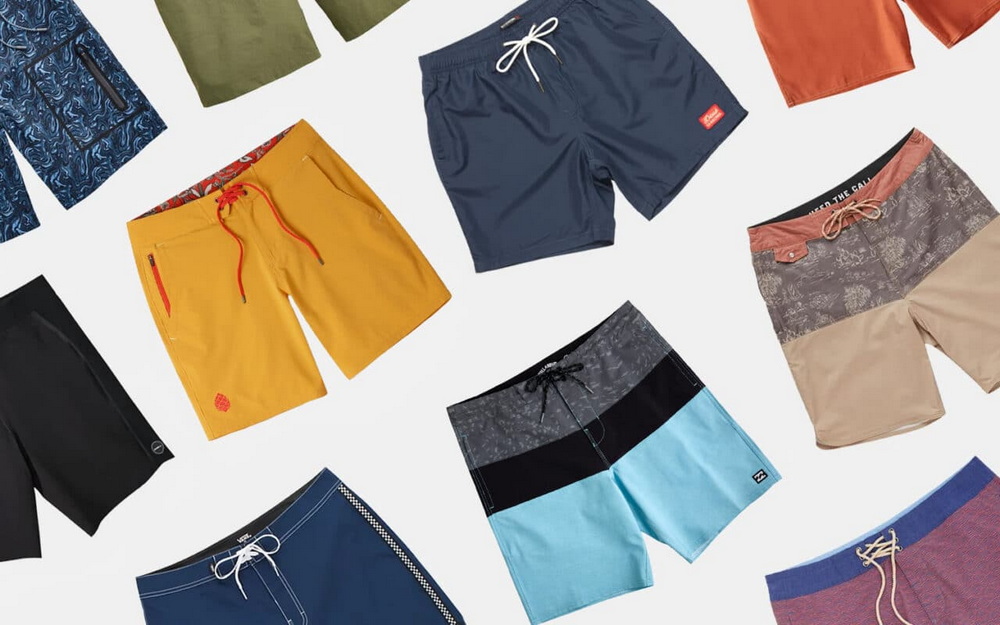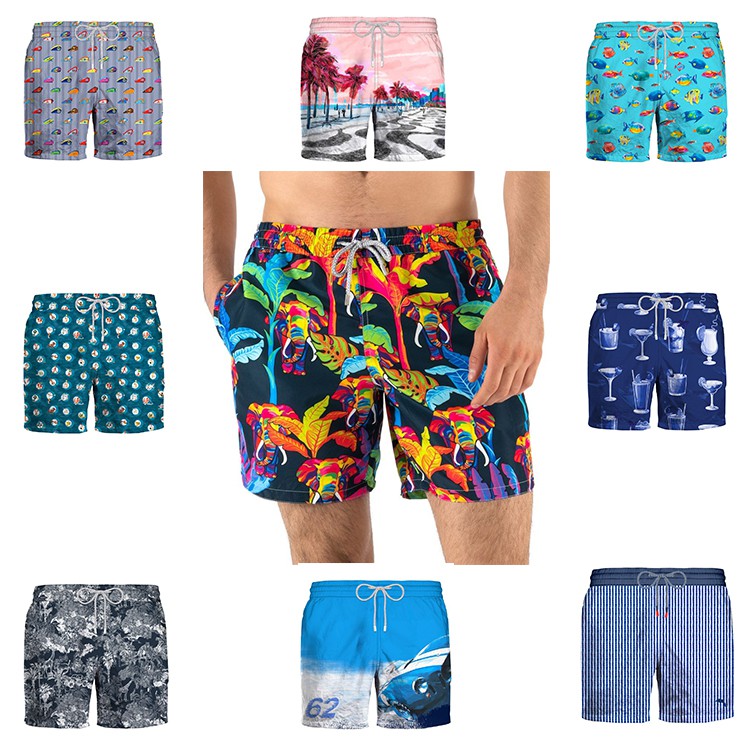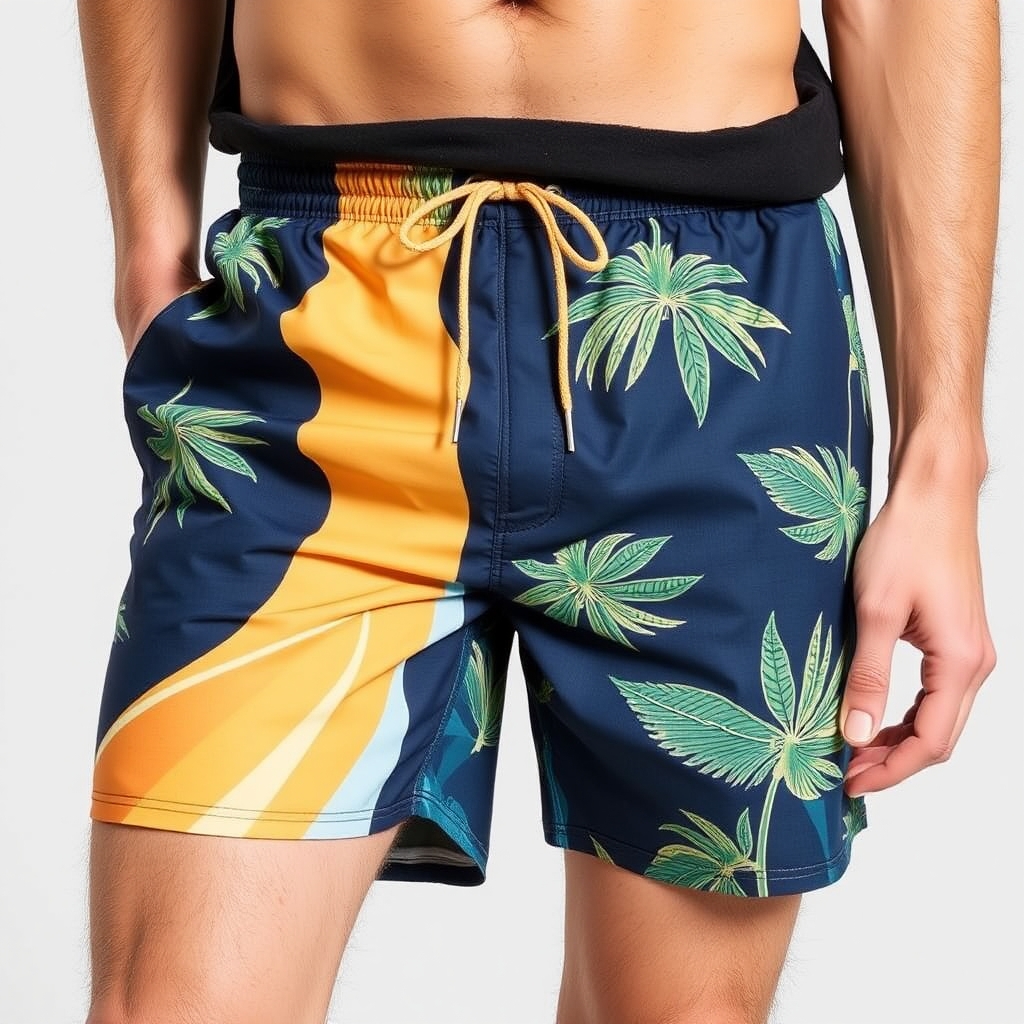Content Menu
● Introduction to Swim Shorts
>> What Are Swim Shorts?
>> The Evolution of Swim Shorts
● The Global Swimwear Market
● Key Players in the Industry
● Manufacturing Processes and Technologies
● Materials and Innovation
● Design Trends and Consumer Preferences
● Sustainability and Ethical Production
● Top Swim Shorts Manufacturers
● Challenges Facing Swim Shorts Manufacturers
● The Future of Swim Shorts Manufacturing
● How to Choose the Right Swim Shorts
>> Consider Your Activities
● Conclusion
● Frequently Asked Questions (FAQs)
>> How Do I Care for My Swim Shorts?
>> What is the Best Material for Swim Shorts?
>> How Do I Know My Size?
Discover the top swim shorts manufacturers and dive into the latest trends in swimwear manufacturing industry!
In the ever-evolving landscape of fashion and sportswear, swim shorts have emerged as a quintessential garment that seamlessly blends style with functionality. As the global demand for swimwear continues to surge, swim shorts manufacturers find themselves at the forefront of an industry that is both dynamic and competitive. This article delves into the intricate world of swim shorts production, exploring the trends, challenges, and innovations that shape this vibrant sector.

Introduction to Swim Shorts
Swim shorts are special shorts designed for swimming, beach days, and all sorts of water fun. They are an important part of swimwear because they keep you comfortable and allow you to move freely in the water. When you wear swim shorts, you're ready for a day at the pool, a surf session at the beach, or just lounging in the sun.
What Are Swim Shorts?
Swim shorts are a type of clothing meant to be worn while swimming. They are usually made from quick-drying materials like nylon or polyester. This helps them dry fast after you get out of the water! Swim shorts come in many styles and colors, so everyone can find a pair they like. Some are even designed with fun patterns or cool designs to show off personality while having fun in the water.
The Evolution of Swim Shorts
Swim shorts, also known as board shorts or swim trunks, have come a long way since their inception. Originally designed for surfers in the 1950s, these versatile garments have transcended their utilitarian roots to become a staple in both athletic and casual wardrobes. Today's swim shorts are a far cry from their humble beginnings, featuring advanced materials, intricate designs, and a wide range of styles to suit every preference.
The evolution of swim shorts reflects broader changes in fashion, technology, and consumer behavior. Modern manufacturers must navigate a complex landscape where performance meets style, and sustainability is increasingly becoming a key consideration. This evolution has led to a diverse market, with products ranging from high-performance athletic wear to fashion-forward beachwear.
The Global Swimwear Market
The swimwear industry, of which swim shorts are a significant component, is a thriving sector with impressive growth projections. This growth is driven by several factors, including the increasing popularity of beach vacations, water sports, and fitness activities. As more people around the world embrace swimming as both a recreational and competitive pursuit, the demand for high-quality swim shorts continues to rise.
The market is characterized by its global nature, with manufacturers and consumers spread across various regions. While traditional markets like Europe and North America continue to dominate in terms of sales volume, emerging markets in Asia-Pacific and Latin America are showing remarkable growth potential. This global distribution presents both opportunities and challenges for swim shorts manufacturers, who must cater to diverse preferences and regulatory environments.

Key Players in the Industry
The swim shorts manufacturing industry is home to a diverse array of players, ranging from large multinational corporations to small, specialized producers. Some of the key players in this sector include well-established sportswear brands that have expanded into swimwear, dedicated swimwear companies, and innovative startups focusing on niche markets.
Large sportswear brands often leverage their extensive research and development capabilities to produce high-performance swim shorts that cater to professional athletes and serious swimmers. These companies typically have global supply chains and distribution networks, allowing them to reach a wide customer base.
Specialized swimwear manufacturers, on the other hand, often focus on creating unique designs and catering to specific market segments. These companies may emphasize fashion-forward styles, eco-friendly materials, or plus-size options, carving out their own niches within the broader market.
Emerging players in the industry are increasingly focusing on sustainability and innovation, introducing new materials and production techniques that minimize environmental impact while maximizing performance and comfort.
Manufacturing Processes and Technologies
The production of swim shorts involves a complex series of processes, from design and pattern-making to cutting, sewing, and finishing. Modern manufacturers employ a range of technologies to streamline these processes and improve product quality.
Computer-aided design (CAD) software is widely used in the initial stages of production, allowing designers to create intricate patterns and visualize the final product before physical prototypes are made. This technology not only speeds up the design process but also reduces waste by minimizing the need for multiple physical samples.
Cutting-edge manufacturing equipment, such as automated cutting machines and advanced sewing machines, helps ensure precision and consistency in production. These technologies allow manufacturers to produce swim shorts with complex designs and features, such as reinforced seams and integrated mesh linings, with greater efficiency.
Quality control is a critical aspect of swim shorts manufacturing, with many producers implementing rigorous testing procedures to ensure that their products meet performance standards for water resistance, chlorine resistance, and UV protection. Advanced testing equipment and methodologies help manufacturers maintain high quality standards across their product lines.
Materials and Innovation
The choice of materials is crucial in swim shorts manufacturing, as it directly impacts the performance, comfort, and durability of the final product. Traditional materials like nylon and polyester remain popular due to their quick-drying properties and resistance to chlorine and saltwater. However, innovative manufacturers are constantly exploring new materials and blends to enhance performance and sustainability.
Recycled materials are gaining traction in the industry, with many manufacturers incorporating recycled polyester made from post-consumer plastic bottles into their swim shorts. This trend aligns with growing consumer demand for eco-friendly products and helps reduce the environmental impact of swimwear production.
Technical fabrics with enhanced properties, such as four-way stretch materials that provide greater freedom of movement, are becoming increasingly common in high-performance swim shorts. Some manufacturers are also experimenting with bio-based materials derived from renewable sources, aiming to create more sustainable alternatives to traditional synthetic fabrics.
Design Trends and Consumer Preferences
The design of swim shorts is heavily influenced by changing fashion trends and consumer preferences. While classic solid colors and simple patterns remain popular, there is a growing demand for bold prints, vibrant colors, and unique designs that allow wearers to express their personal style.
Length is another important factor in swim shorts design, with preferences varying across different regions and age groups. While shorter styles are gaining popularity in some markets, longer board short styles remain favored by many consumers, particularly those engaged in active water sports.
Functionality is increasingly being integrated into design, with features such as quick-dry fabrics, UV protection, and secure pockets becoming standard in many swim shorts. Some manufacturers are also exploring smart textiles and wearable technology, incorporating features like waterproof phone pockets or sensors that can track swimming performance.
Sustainability and Ethical Production
As consumers become more environmentally conscious, swim shorts manufacturers are under increasing pressure to adopt sustainable practices. This shift extends beyond the use of eco-friendly materials to encompass the entire production process, from sourcing to packaging and distribution.
Many manufacturers are implementing water-saving technologies in their production facilities, recognizing the irony of water-intensive production processes for swimwear. Energy efficiency is another focus area, with some companies investing in renewable energy sources to power their operations.
Ethical production practices, including fair labor conditions and transparency in the supply chain, are becoming important differentiators in the market. Consumers are increasingly seeking out brands that can demonstrate a commitment to social responsibility, pushing manufacturers to improve their practices and communication around these issues.
Top Swim Shorts Manufacturers
When it comes to finding the perfect swim shorts, knowing the top swim short manufacturers can help you make the best choice. These manufacturers are well-known for their quality swim shorts and unique styles. Let's take a look at some of the most popular manufacturers and what makes them stand out.
1. Abely Fashion: Abely Fashion is a professional swim shorts manufacturer offering one-stop services, including custom designs and low Minimum Order Quantity (MOQ) options. Their product line includes a variety of swim short styles, ranging from classic designs to trendy, fashion-forward options.
2. AEL Apparel: AEL Apparel is a sustainable swimwear manufacturer based in China. They focus on eco-friendly and sustainable practices, offering custom swimwear designs for men and women in various styles and sizes.
3. Bali Swim: Bali Swim is one of the most eco-friendly swimwear manufacturers in Indonesia. They likely have expertise in swim shorts production as well.
4. Arcus Apparel Group: Arcus Apparel Group is considered one of the best small-batch swimwear production manufacturers in the USA. They may specialize in small-scale orders or unique designs.
5. TYR Sport: TYR Sport is a well-known manufacturer of swimming and triathlon gear, and their product line likely includes high-performance swim shorts.
6. Arena: Arena is another globally recognized swimming equipment manufacturer that likely produces various styles of swim shorts.
7. Speedo: Speedo is one of the leading brands in swimming equipment, and their product line typically includes various styles of swim shorts.
8. Quiksilver: Quiksilver is a brand focused on surf and beach culture, producing various styles of swim shorts and board shorts.
9. Billabong: Billabong is another famous surf and beach clothing brand, with a product line that includes multiple styles of swim shorts.
10. O'Neill: O'Neill is a long-standing surf brand that produces various styles of swim shorts and beach gear.
These manufacturers represent different aspects of the swim shorts industry, from specialized swimwear manufacturers to broader beach and surf clothing brands. Each company has its unique strengths and specialties to cater to different customer needs.
Challenges Facing Swim Shorts Manufacturers
Despite the industry's growth and potential, swim shorts manufacturers face several challenges. Competition is intense, with new players constantly entering the market and established brands expanding their offerings. This competitive landscape puts pressure on manufacturers to innovate continuously while maintaining competitive pricing.
Supply chain management is another significant challenge, particularly in light of recent global disruptions. Manufacturers must navigate complex international networks of suppliers, balancing cost considerations with the need for reliability and quality control.
Regulatory compliance presents additional challenges, particularly for manufacturers operating in multiple markets. Different regions may have varying standards for fabric composition, chemical treatments, and labeling, requiring manufacturers to adapt their products and processes accordingly.
The seasonality of swimwear demand can also pose challenges for manufacturers, who must carefully manage inventory and production schedules to meet peak demand during summer months while minimizing excess stock during off-seasons.
The Future of Swim Shorts Manufacturing
Looking ahead, the future of swim shorts manufacturing appears bright, with continued growth expected in the global swimwear market. However, success in this evolving landscape will require manufacturers to stay agile and responsive to changing consumer preferences and market conditions.
Innovation will remain a key driver of success, with manufacturers likely to focus on developing new materials and technologies that enhance performance, comfort, and sustainability. The integration of digital technologies, from 3D printing for prototyping to AI-driven demand forecasting, is expected to play an increasingly important role in the industry.
Customization and personalization are likely to become more prevalent, with some manufacturers exploring on-demand production models that allow consumers to design their own swim shorts. This approach could help address issues of overproduction and waste while catering to consumers' desire for unique products.
Sustainability is expected to move from a niche concern to a mainstream requirement, with manufacturers investing in circular economy principles and exploring innovative recycling technologies for swimwear materials.
How to Choose the Right Swim Shorts
Choosing the right swim shorts can make your time at the pool or beach much more enjoyable. There are many different types of swim shorts, each made for different activities. Here are some tips to help you find the best swim shorts that fit your needs.
Consider Your Activities
Think about what you will be doing when you wear your swim shorts. If you love swimming laps in the pool, you might want shorts that are tight and won't drag in the water. For surfing or playing beach volleyball, you might prefer longer shorts that stay in place. If you're just lounging by the pool, a loose and comfy pair could be perfect. Understanding your activities will help you choose the right style and material that suits your fun time in the water.
Conclusion
The world of swim shorts manufacturing is a dynamic and multifaceted industry that combines elements of fashion, technology, and performance wear. As consumer preferences evolve and global awareness of environmental issues grows, manufacturers are challenged to produce products that not only look good and perform well but also align with values of sustainability and ethical production.
From the beaches of Brazil to the pools of Europe and the surf spots of Australia, swim shorts have become a global garment that reflects local cultures while meeting universal needs for comfort and style in the water. The manufacturers who will thrive in this competitive landscape are those who can navigate the complexities of global production, embrace innovation, and respond nimbly to changing market demands.
As we look to the future, the swim shorts industry stands as a testament to the power of innovation and adaptability in fashion manufacturing. With continued focus on sustainability, performance, and style, swim shorts manufacturers are well-positioned to ride the wave of success in the years to come, creating products that not only meet the needs of swimmers and beachgoers around the world but also contribute to a more sustainable and responsible fashion industry.

Frequently Asked Questions (FAQs)
How Do I Care for My Swim Shorts?
Taking care of your swim shorts is easy! First, always rinse them with fresh water after swimming. This helps remove chlorine or salt that can damage the fabric. When it's time to wash them, use cold water and a gentle detergent. Avoid using bleach, as it can ruin the colors and materials. Hang your swim shorts to dry instead of putting them in the dryer. This keeps them looking great and lasting longer!
What is the Best Material for Swim Shorts?
Swim shorts can be made from many different materials. The best ones are usually made from polyester or nylon. These materials dry quickly and are really strong. If you're going to be swimming a lot, look for swim shorts with a lining for extra comfort. For activities like surfing, you might want shorts made from spandex because they stretch well and allow for easy movement.
How Do I Know My Size?
Finding the right size for your swim shorts is important for comfort. Start by measuring your waist with a tape measure. Make sure it's snug but not too tight! Then, check the size chart of the brand you're buying from, as sizes can vary. If you're in between sizes, think about how you want your swim shorts to fit. A little bit of extra room can be nice for swimming, but you also want them to stay in place!




































